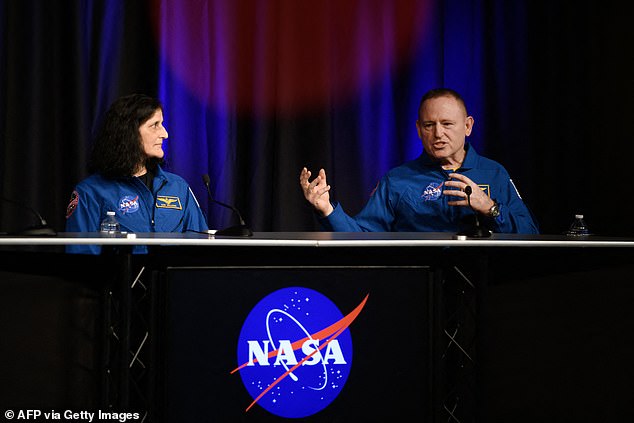
Body Language Expert Reveals NASA Astronauts’ Silent Crisis: Leadership Blamed for Stranding Ordeal
NASA Astronauts Reflect on Extended Space Odyssey: Teamwork and Tensions Revealed
By [Your Name], Updated: [Date]
NASA astronauts Sunita Williams and Barry “Butch” Wilmore returned to Earth last month after a dramatic nine-month stay aboard the International Space Station (ISS)—far longer than their initial 10-day mission. Their extended stay, caused by technical issues with Boeing’s Starliner capsule, sparked global questions about their experience. In their first interviews since splashing down in the Gulf of Mexico, the duo revealed glimpses of resilience, camaraderie, and underlying tensions.
[Image 1: Astronauts Williams and Wilmore during their Fox News interview. Caption: Wilmore and Williams emphasized teamwork during their Fox News interview, with body language expert Judi James noting their “shared playful fun.”]
During a joint Fox News interview and subsequent NASA press conference, the astronauts downplayed feelings of abandonment. Body language expert Judi James analyzed their interactions, observing “emotional survival techniques” like stoicism and loyalty. When asked if they felt stranded, Wilmore firmly denied it, while Williams nodded emphatically. “Their unity showcased solidarity,” James noted, adding their camaraderie and lighthearted moments hinted at relying on friendship during isolation.
However, the tone shifted when responsibility for the mission’s delays arose. Wilmore, the spacecraft commander, admitted fault, stating, “I should have asked questions I didn’t.” He also cited broader issues with Boeing and NASA’s preparation. James highlighted his defensive gestures, like neck-scratching and vigorous speech, suggesting suppressed frustration. “He carried responsibility like a shield,” she said, interpreting his animated delivery as a bid to protect NASA’s reputation.
[Image 2: Wilmore gesturing during the press conference. Caption: Wilmore’s body language, including neck-scratching and emphatic hand movements, hinted at underlying tension when discussing accountability.]
Williams, meanwhile, exuded calm. She shrugged off the ordeal’s drama during interviews, sitting composedly with crossed legs and hands in her lap. James described her as a “steadying presence,” contrasting Wilmore’s “nervous energy” and emotional vocal shifts. Still, both stressed their roles in a broader team. Williams illustrated “tunnel vision” with hand motions, explaining how focusing on collective goals helped them endure.
[Image 3: Williams demonstrating “tunnel vision” during the press conference. Caption: Williams used hand gestures to describe the crew’s focused mindset during their extended mission.]
The pair repeatedly emphasized collaboration over blame. “We all own this,” Wilmore insisted, shrugging during the press conference. Yet James detected unresolved strain beneath their teamwork narrative. While their bond and professionalism shone through, subtle cues—Wilmore’s tightened posture when questioned, Williams’ gentle head shakes—hinted at the psychological toll of their prolonged isolation.
The astronauts’ ordeal underscores the unpredictable challenges of space travel. Their ability to navigate stress with humor and mutual support offers insights into human resilience beyond Earth—even as their body language reveals untold layers of their journey.
Word count: 598


